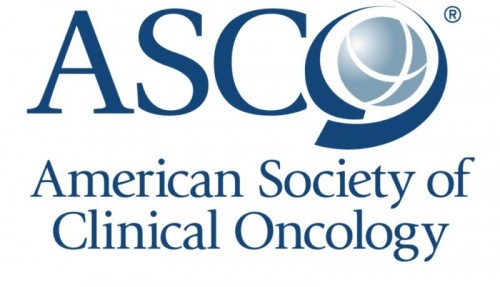Young people who have been vaccinated against human papillomavirus (HPV) are less likely to become infected with virus types that can cause mouth and throat cancer, researchers reported at the American Society of Clinical Oncology (ASCO) annual meeting last week in Chicago.
Researchers calculated that vaccination could reduce the prevalence of four common HPV types by 88 percent, but greater vaccine coverage is needed for vaccination to reach its full potential.
“While we were encouraged that there was a notable impact of the vaccine on oral HPV infections among vaccinated individuals, that benefit was modest overall and lower than we would hope in men due to low vaccine uptake,” said Maura L. Gillison, MD, of the University of Texas MD Anderson Cancer Center, one of the first researchers to make the link between HPV and mouth and throat cancer.
Oral cancer is becoming more common in the United States, with around 50,000 cases diagnosed each year. HPV infection, smoking or chewing tobacco and heavy drinking are major risk factors. Mouth and throat cancers are often diagnosed late and mortality is high.
The HPV family of viruses includes more than 150 types, many of which promote abnormal cell growth. These viruses are usually sexually transmitted, and most sexually active people carry one or more types. So-called low-risk types cause nonmalignant growths such as genital warts, while high-risk types can cause cervical, anal and oral cancers. More than 90 percent of mouth and throat cancers are caused by HPV type 16, Gillison said.
The original quadrivalent Gardasil vaccine protects against the high-risk types 16 and 18 and the low-risk types 6 and 11. A newer version of Gardasil covers nine different types. A different vaccine, Cervarix, protects against types 16 and 18 only. The U.S. Centers for Disease Control and Prevention recommends routine HPV vaccination for girls and boys at age 11 or 12 (two doses six months apart, a 2016 revision of guidelines that previously recommended three doses). People who get vaccinated later (up to age 26 for young women and up to age 21 for young men) will need three.
HPV vaccines have been shown to reduce the risk of cervical, genital and anal cancers, but less is known about their effect on oral cancer risk. Because cancer can take a long time to develop and usually occurs at older ages, the impact of adolescent HPV vaccination on cancer rates will likely not be apparent for decades. But changes in rates of HPV infection—the main risk factor for these types of cancer—can be evaluated sooner.
Gillison and her colleagues compared the prevalence of oral HPV infection among young women and men who had received or not received HPV vaccines. They looked at data from the National Health and Nutrition Examination Survey (NHANES), an ongoing, nationally representative U.S. household survey.
The study included 2,627 young women and men ages 18 to 33 who participated in the survey from 2011 through 2014. NHANES participants complete interviews about demographic and health-related factors and undergo physical exams. For this analysis, they gave oral fluid samples to be tested for HPV.
Nearly a third of study participants were current or former smokers; they reported having had about seven sex partners on average during their lifetime. Smoking and having more sex partners are both known risk factors for HPV-related cancers.
Eighteen percent said they had received at least one dose of any available HPV vaccine before age 26, but young men (7 percent) were much less likely to have been vaccinated than young women (29 percent).
The study showed that 0.11 percent of vaccinated participants tested positive for one of the HPV types covered by the quadrivalent Gardasil vaccine (6, 11, 16 or 18), compared with 1.61 percent of unvaccinated people. Looking only at HPV type 16, the prevalence rates were 0.11 and 0.94 percent, respectively. Vaccination reduced the likelihood of having the vaccine-covered HPV types by 88 percent, Gillison said.
The risk reduction was especially striking for young men. None of the vaccinated men tested positive for HPV types 6, 11, 16 or 18, compared with 2.13 percent of unvaccinated men. The difference was smaller and not statistically significant (meaning that it could have occurred by chance) for young women, with 0.14 percent of vaccinated and 0.97 percent of unvaccinated women having these HPV types.
The researchers calculated that if 100 percent of young people were vaccinated, 927,401 out of 995,410 projected infections with HPV types 6, 11, 16 and 18 could be prevented. But given current vaccination levels, protection was more modest on a population level: just 169,650 infections—or 17 percent—were prevented. Because men are less likely to be vaccinated, their population prevalence fell by only 7 percent, compared with a 25 percent drop for women.
These findings suggest that HPV vaccination likely provides benefits beyond prevention of cervical, genital and anal cancers, Gillison’s team concluded.
A related NHANES study presented at a recent pediatric medicine conference found that vaccination had reduced the prevalence of cervical HPV infection among young women by about 60 percent. That study was the first to show that widespread HPV vaccination was producing “herd immunity,” which offers protection on a population level even for people who are not vaccinated themselves.
“The HPV vaccine has the potential to be one of the most significant cancer prevention tools ever developed, and it’s already reducing the world’s burden of cervical cancers,” ASCO president Bruce E. Johnson, MD, of the Dana-Farber Cancer Institute in Boston said in a statement. “The hope is that vaccination will also curb rising rates of HPV-related oral and genital cancers, which are hard to treat. This study confirms that the HPV vaccine can prevent oral HPV infections, but we know it only works if it’s used.”








Comments
Comments